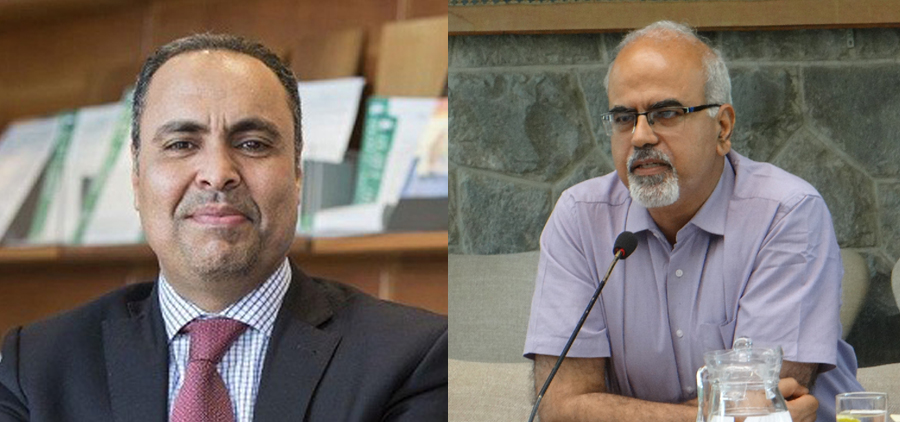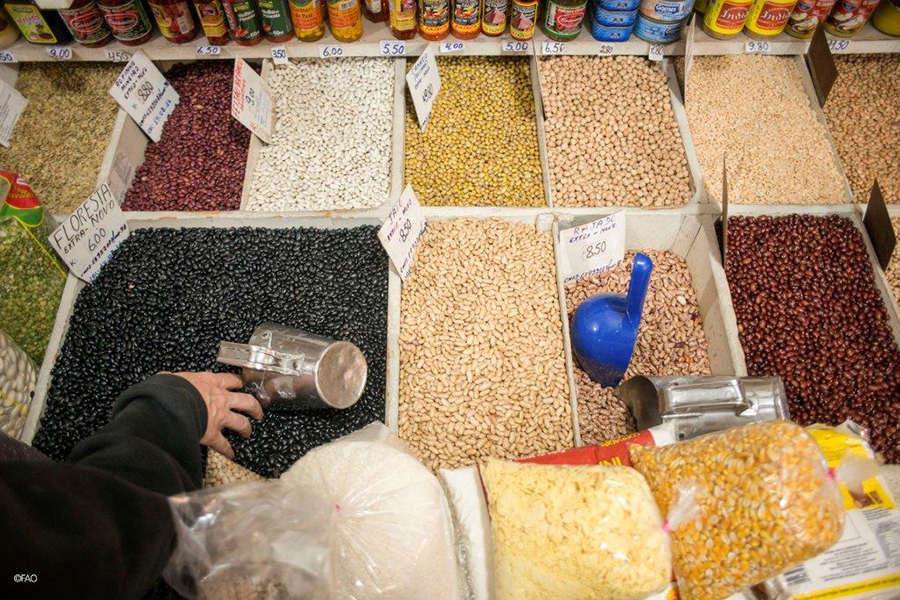
Boubaker Ben-Belhassen (UN FAO) and Vikas Rawal (Jawaharlal Nehru University, New Delhi)
By Boubaker Ben-Belhassen, UN FAO and Vikas Rawal, Jawaharlal Nehru University, New Delhi
In 2018, the last year for which we have official production statistics, the world produced an estimated 92.4 million MT of pulses. Between 1998 and 2018, pulse production increased by nearly 36 million MT (or 63 percent). That compares to an increase of only 12.5 million MT between 1978 and 1998.
The expansion in pulse production over the past two decades was particularly impressive, not least because it has been broad-based across pulse crops and major producing regions. Substantial increases have been achieved in the production of common beans (+14 million MT), chickpeas (+8.3 million MT), lentils and pigeon peas (+3.6 million MT each), cowpeas (+3.5 million MT) and dry peas (+1.2 million MT). In terms of regions, production increased by 17.3 million MT in Asia (with South Asia contributing 12 million MT of that total), 10.5 million MT in sub-Saharan Africa, 4.8 million MT in North America and 2.2 million MT in Latin America and the Caribbean.
Collaboration among CGIAR institutions, such as ICRISAT, ICARDA and CIAT, and national agricultural research systems across the world, has resulted in the development of new cultivars suitable for production in diverse agro-climatic conditions and effective in coping with different kinds of biotic and abiotic stresses. Significant work has been done by these institutions to conserve the genetic resources of pulse crops. Currently, ICRISAT holds 20,764 accessions of chickpeas and 13,783 accessions of pigeon peas, ICARDA has 11,877 accessions of lentils and CIAT holds 37,938 accessions of Phaseolus beans. In addition, many national gene banks hold substantial repositories of genetic resources. For example, national gene banks in India have over 63,000 accessions of different pulse crops. Conservation of genetic resources at this scale and their use for developing new cultivars became possible thanks to the establishment in 1980 of the Commission on Genetic Resources for Food and Agriculture in the Food and Agriculture Organization of the United Nations (FAO) and the adoption of the International Treaty on Plant Genetic Resources for Food and Agriculture (PGRFA) by the FAO Conference in 2001. The Treaty has provided the legal framework for making the global pool of plant genetic resources accessible to farmers, plant breeders and scientists. Development of short-duration and disease-resistant cultivars of pulse crops is a sterling example of the success of the International Treaty on PGRFA in sharing the global wealth of genetic resources.
A substantial part of pulse production, even on smallholder farms, goes to the market. The strong demand for pulses over the last two decades has translated into favourable terms of trade for these crops. In countries such as Canada, the U.S. and Australia, yield increases owing to technological advances coupled with good prices, have made pulses compete favourably with other crops in terms of returns to producers. Pulse producers in these countries benefit from economies of scale, particularly in the deployment of machines, and higher use of improved varieties of seeds, inoculants and plant protection inputs. For instance, lentils have become an important part of crop rotations in provinces like Saskatchewan, Alberta and Manitoba, while chickpeas play the same role in Northeastern, Southeastern and Western Australia. In the U.S. states of Montana and North Dakota, dry peas, pinto beans and lentils are well integrated into the cropping systems.
By contrast, pulse production in large parts of South Asia and sub-Saharan Africa takes place on smallholder farms. Although substantial gains have been made over the last two decades in some countries in these regions, overall, modern technology availability remains low and rural infrastructure is weak. Smallholder pulse growers in these regions lack access to improved varieties of seeds, knowledge about appropriate agronomic practices, and resources for buying modern inputs. In addition, and despite the high prices of pulses, large gaps between potential and actual yields has meant that returns from pulse crops are lower than major competing crops. As a result, pulses are mainly grown on marginal soils and remote farm areas, and thus subject to the vagaries of the climate. Growing pulses in such conditions results in large fluctuations in production.
The expansion in pulse production has also been associated with the increasing importance of the international trade in pulses. In 2017, about 20% of total pulse production was traded internationally. This is due to a number of factors. For instance, despite substantial increases in domestic production in South Asian countries, the region has emerged as a major importer of pulses. India alone accounts for about a third of global pulse imports. The growth in global import demand has stimulated pulse production in export-oriented countries such as Canada, Australia and Myanmar. However, widely fluctuating production in importing countries constitutes a major uncertainty for pulse producers in exporting countries. Farmers in these countries cannot confidently make planting decisions because of the instability of foreign demand. Pulse storage requires temperature and humidity control, and considerable losses can occur in the absence of appropriate storage infrastructure. Inability to dispose of the crop on time could result in additional costs and lower returns to the producers.
While the growth in pulse production has been the result of concerted public action towards developing improved varieties and identifying suitable agronomic practices to make the cultivation of pulses attractive for farmers under diverse agro-climatic conditions and economic contexts across the world, much more needs to be done. Increasing support to smallholder pulse production in the form of public extension services, provision of improved technologies and inputs, and enhanced access to credit and insurance can go a long way towards closing yield gaps on smallholder farms and making the production of pulses more remunerative and competitive.
Looking ahead, the key lies in simultaneously ensuring that pulses are remunerative for producers and affordable for consumers. In many regions of the world, in recent decades, pulses have tended to lose their advantage to poultry in terms of being an affordable source of protein. This trend can, however, be reversed by enhancing the functioning of markets and increasing the efficiency of pulses value chains. A policy focus is required in this respect for a brighter future for pulses.
Through their benefits on both the production and consumption sides, pulses have a promising future as regards their potential substantial contributions to a number of Sustainable Development Goals, namely SDG 2 on hunger, malnutrition and sustainable agriculture.


Boubaker Ben-Belhassen / FAO / Vikas Rawal / Jawaharlal Nehru University / dry beans / chickpeas / lentils / cowpeas / dry peas / pigeon peas / Asia / sub-Saharan Africa / North America / Oceania / Latin America and the Caribbean / pulse production
Disclaimer: The opinions or views expressed in this publication are those of the authors or quoted persons. They do not purport to reflect the opinions or views of the Global Pulse Confederation or its members.